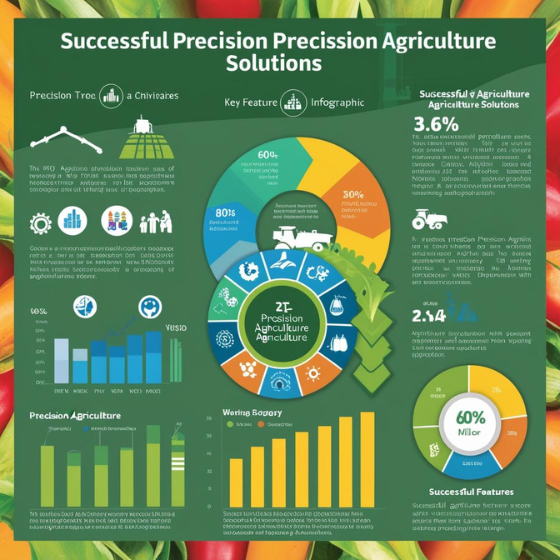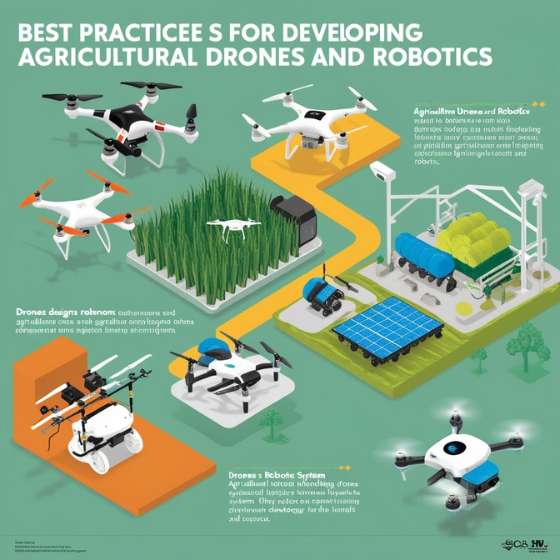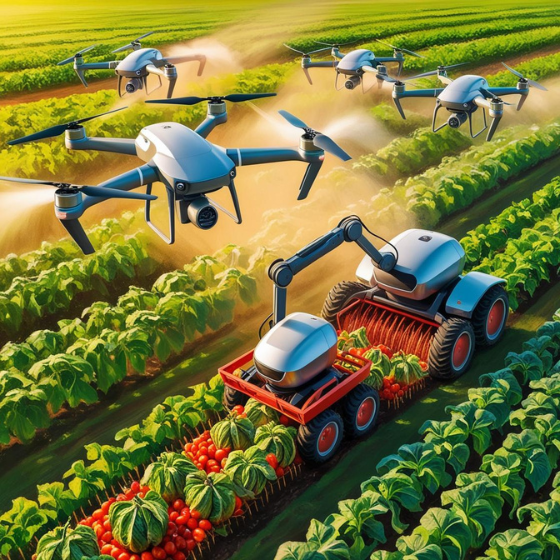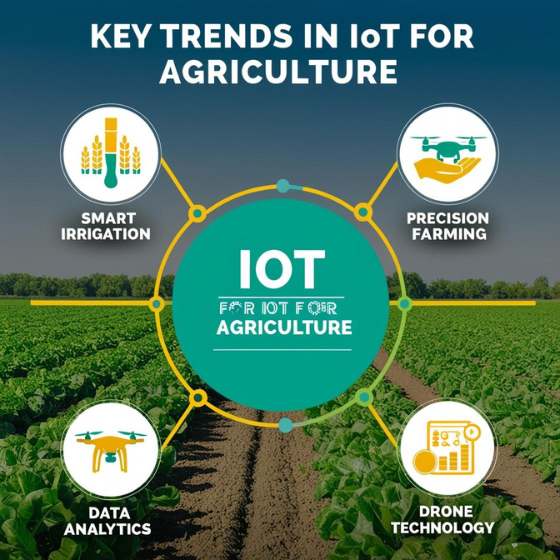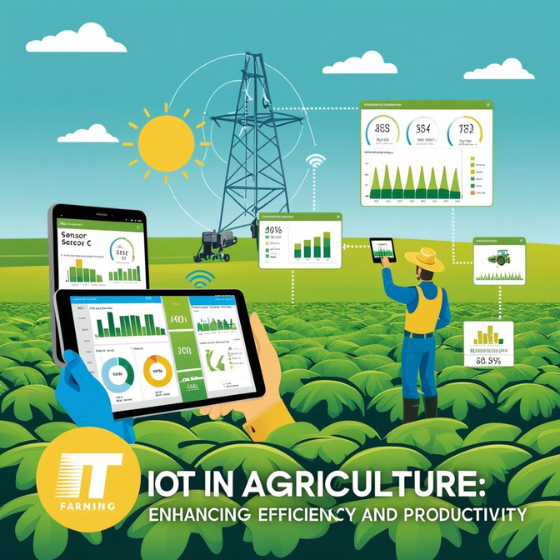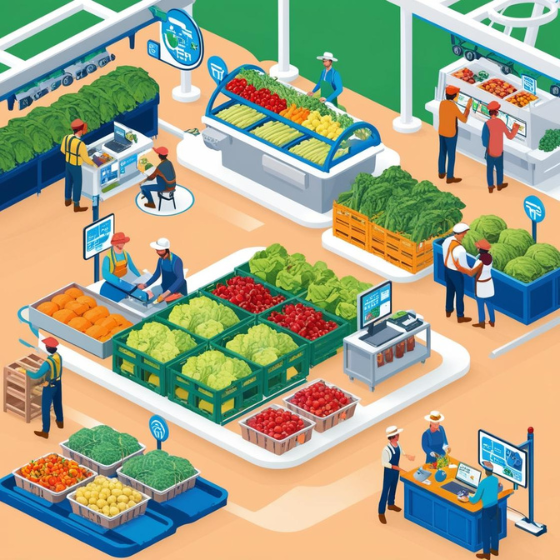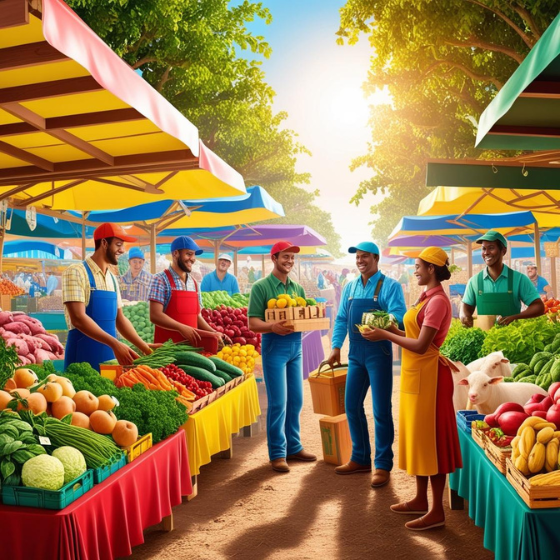Key Features of Successful Precision Agriculture Solutions
Precision agriculture is transforming the farming industry by using advanced technologies to optimize crop yields, reduce waste, and promote sustainability. This approach relies on data-driven solutions to enhance every aspect of farming. In this article, we’ll explore the essential features of successful precision agriculture solutions and how they help farmers achieve better yields and improved productivity.
1. Real-Time Data Collection and Monitoring
At the core of precision agriculture is the ability to collect real-time data. This data helps farmers gain insights into soil conditions, crop health, and environmental factors that directly impact yields. Successful precision agriculture solutions rely on sensors, drones, and other technologies to gather this data.
Key Tools for Real-Time Data Collection:
- Soil Sensors: These sensors monitor soil moisture, temperature, and pH levels. They help farmers adjust irrigation and fertilization methods for better crop growth.
- Drones and Satellite Imagery: Drones and satellites provide high-resolution images to assess crop health, growth, and potential issues like pests or diseases.
- Weather Stations: These stations deliver real-time weather data, which helps farmers plan irrigation and harvesting schedules more effectively.
By collecting and analyzing real-time data, farmers can make informed decisions that improve crop health and increase yields.
2. Data Analytics and Artificial Intelligence (AI) Integration
Precision agriculture generates a large amount of data. To make sense of this data, successful solutions use advanced analytics and AI tools. These tools help farmers analyze data and make better decisions about planting, fertilizing, irrigation, and harvesting.
Benefits of Data Analytics and AI:
- Predictive Analytics: AI can forecast challenges like droughts or pest problems. This allows farmers to act early and prevent damage.
- Crop Yield Predictions: By analyzing historical and real-time data, AI tools predict the expected yield of crops, helping farmers plan harvest times more effectively.
- Resource Optimization: AI suggests the best use of water, fertilizers, and pesticides, ensuring that resources are used efficiently and sustainably.
Using AI and data analytics in precision agriculture helps farmers maximize efficiency, save costs, and boost crop production.
3. Precision Irrigation Systems
Water is crucial for crop growth, but using it inefficiently can lead to waste and increased costs. Precision irrigation systems are an essential part of precision agriculture. These systems ensure that water is applied in the right amount at the right time and in the right place.
Key Features of Precision Irrigation:
- Variable Rate Irrigation (VRI): VRI technology adjusts the amount of water based on soil conditions and weather forecasts. It ensures that crops receive the right amount of water.
- Automated Irrigation: These systems automatically adjust the irrigation schedule, saving time and resources.
- Drip Irrigation: Drip irrigation delivers water directly to the plant roots, minimizing waste and ensuring crops get the moisture they need.
Precision irrigation helps farmers reduce water use, lower costs, and increase crop health, leading to better yields.
4. Variable Rate Technology (VRT) for Fertilization and Pesticides
Variable Rate Technology (VRT) is another key feature of successful precision agriculture solutions. VRT helps farmers apply fertilizers and pesticides at varying rates across different parts of a field. This results in better resource use and increased sustainability.
Benefits of VRT:
- Targeted Application: VRT applies fertilizers and pesticides only where needed. This reduces waste and minimizes environmental impact.
- Cost Savings: By applying inputs more efficiently, VRT lowers costs for farmers.
- Improved Crop Health: VRT ensures that crops receive the right nutrients, leading to healthier plants and better yields.
Incorporating VRT into farming operations boosts crop performance and reduces environmental harm.
5. GPS-Guided Equipment and Automation
GPS-guided machinery and automation are essential for precision farming. These technologies improve efficiency, reduce human error, and ensure that tasks like planting, fertilizing, and harvesting are done accurately.
Key Features of GPS and Automation:
- GPS-Guided Equipment: Tractors and harvesters with GPS reduce overlaps, ensuring that every part of the field gets proper attention. This saves fuel, reduces waste, and improves productivity.
- Automated Planting and Harvesting: Automation systems ensure that crops are planted and harvested precisely, improving crop management and resource use.
- Self-Driving Machines: These machines can operate without human input, further reducing labor costs and increasing accuracy.
By using GPS and automated systems, farmers can streamline their processes, saving both time and money while increasing crop yields.
6. Remote Sensing for Early Detection of Issues
Detecting issues early is crucial for maximizing yields. Remote sensing technologies like drones and satellites allow farmers to identify problems such as pest infestations, diseases, or nutrient deficiencies early. Early detection allows for quicker intervention and better crop health.
Benefits of Remote Sensing:
- Health Monitoring: Drones and satellites provide detailed images that show the health of crops. This helps identify issues like stress or nutrient deficiencies before they become serious.
- Pest and Disease Detection: Remote sensing detects pest and disease hotspots, allowing for targeted treatments.
- Faster Response Time: Early detection allows farmers to act quickly, preventing issues from spreading and reducing the impact on yields.
With remote sensing, farmers can protect their crops and improve overall productivity.
7. Integration with Farm Management Software
Farm management software is a critical part of successful precision agriculture solutions. These platforms collect and organize data from various sources, giving farmers a complete overview of their operations. By integrating all tools into one platform, farm management software ensures seamless data sharing and helps farmers make informed decisions.
Key Features of Farm Management Software:
- Centralized Data Hub: It consolidates data from sensors, drones, and GPS devices, making it easy to analyze and manage.
- Planning and Scheduling: Farm management software helps farmers plan and schedule tasks such as planting, irrigation, and harvesting based on real-time data.
- Reporting and Analysis: The software provides detailed reports on crop performance, helping farmers track progress and adjust strategies as needed.
By using farm management software, farmers can make smarter decisions, improve efficiency, and boost productivity.
Conclusion
Precision agriculture is revolutionizing farming by incorporating advanced technologies to improve crop yields, reduce waste, and increase sustainability. By utilizing real-time data, AI, precision irrigation, VRT, and more, farmers can make better decisions and optimize their operations for maximum productivity. The future of farming lies in these smart solutions, which can help increase efficiency, reduce costs, and ensure better crop health.
Want to optimize your farming operations? Learn how Sodio’s precision agriculture solutions can help you leverage technology for better yields. Contact us today to get started!
